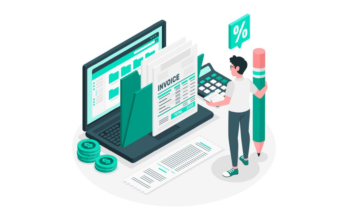Table of Contents
Given the persistent challenges confronting the financial sector, institutions must implement resilient risk management strategies. Financial institutions can improve their capacity to identify, prevent, and mitigate economic crimes through the following measures: comprehending the characteristics of such risks, evaluating susceptibilities, establishing robust internal controls, etc.
This article provides valuable insights into the effective management of economic crime risks for financial institutions.
Understanding Economic Crime Risks
Financial institutions must have a comprehensive understanding of economic crime risks to manage and mitigate the potential negative effects of these risks on their operations and stakeholders.
Economic crime hazards comprise an extensive spectrum of illicit undertakings, such as cybercrime, money laundering, fraud, and corruption. Financial institutions can detect criminally exploitable vulnerabilities in their systems and processes by gaining comprehension of these threats.
Then, they will be able to implement the controls and measures necessary to detect, prevent, and respond to incidents of economic crime. This requires the organisation to conduct routine risk assessments, maintain an awareness of emergent trends and regulatory requirements, and promote a culture of ethical conduct and compliance.
Assessing Vulnerabilities in Your Institution
To assess an organisation’s vulnerability to economic crime, it is vital to perform a thorough evaluation of its susceptibilities. This entails the identification and analysis of potential vulnerabilities that may be exploited by offenders within the institution’s systems, processes, and infrastructure.
A multitude of factors can give rise to vulnerabilities, including but not limited to obsolete technology, insufficient security protocols, ineffective frameworks for financial risk management and insufficient employee awareness and training. In addition to internal factors, the evaluation should consider external influences, including emerging hazards and regulatory obligations within the financial industry.
Financial institutions can prioritise improvement areas and acquire a comprehensive comprehension of their vulnerabilities through the implementation of a rigorous evaluation process.
Implementing Robust Internal Controls
An organisation must ensure the security and integrity of its operations by implementing robust internal controls. The policies, procedures, and processes implemented to protect assets, avert fraud, and identify and rectify errors are referred to as internal controls. By implementing robust internal controls, financial institutions can mitigate the risk of economic crime and protect themselves from potential losses.
Segmentation of duties, an essential element of robust internal controls, entails the allocation of responsibilities among distinct individuals to prevent any one individual from exercising unrestricted authority over a particular process or transaction. In addition, routine evaluation and monitoring of internal controls is essential for identifying any system vulnerabilities or weaknesses and implementing the required corrective measures.
Training and Educating Staff on Risk Management
Providing staff with risk management training and education is essential for cultivating an organization-wide culture of accountability and vigilance. Financial institutions can enhance the capability of their personnel to effectively recognise and address economic crime risks through the implementation of comprehensive training programmes.
The curriculum of these programmes ought to encompass a wide range of risk management topics, such as identifying red flags, comprehending the various classifications of economic crimes, and executing suitable preventive actions. Additionally, personnel ought to be instructed regarding the criticality of complying with internal controls and expeditiously reporting any suspicious activities.
Conducting Regular Risk Assessments
Regular risk assessments are essential for identifying and evaluating potential vulnerabilities and threats within an organisation. These assessments involve systematically examining the internal control systems, processes, and procedures in place to detect and mitigate economic crime risks.
Financial institutions can proactively identify vulnerabilities and implement suitable controls to prevent and detect economic crimes, including money laundering, corruption, and fraud, through the regular execution of risk assessments. Internal and external factors that could affect the risk profile of the institution, such as technological advancements, regulatory environment changes, and emergent threat trends, should be incorporated into these evaluations.
Through consistent risk assessment, institutions can maintain the efficacy and congruence of their risk management strategies with the ever-changing realm of economic crime.
Collaborating with Law Enforcement and Regulatory Agencies
Complicity with law enforcement and regulatory agencies is crucial for ensuring the effectiveness of risk mitigation measures and the overall integrity of the financial system. Financial institutions should establish strong partnerships with these entities to enhance their ability to detect, prevent, and investigate economic crimes.
By sharing information and intelligence, financial institutions can gain valuable insights into emerging threats and trends in criminal activities. Moreover, collaboration allows for the exchange of best practices and the development of standardised procedures for reporting and handling suspicious activities.
Law enforcement and regulatory agencies bring their expertise and legal authority to the table, assisting financial institutions in identifying and prosecuting perpetrators of economic crimes.
Monitoring and Reporting Suspicious Activities
Effective risk mitigation within the financial system necessitates the monitoring and reporting of suspicious activities. The responsibility of identifying and monitoring potentially illicit activities, such as money laundering, financing of terrorism, or other forms of economic crime, lies with financial institutions.
To accomplish this, establishments implement sophisticated surveillance systems that examine client behaviours and transactions in search of atypical patterns or warning signs. These systems employ sophisticated algorithms and machine learning methodologies to identify dubious activities and produce notifications that warrant additional scrutiny.
If financial institutions detect suspicious activities, they are obligated to notify the relevant authorities, including law enforcement agencies or financial intelligence units.
Conclusion
Effective economic crime risk management is crucial for financial institutions. Understanding the risks and vulnerabilities, implementing strong internal controls, and training staff on risk management are essential steps.
Regular risk assessments, collaboration with law enforcement and regulatory agencies, and monitoring and reporting suspicious activities are also important for mitigating economic crime risks. By executing these methods, financial institutions can protect themselves and their stakeholders from potential economic crime threats.



